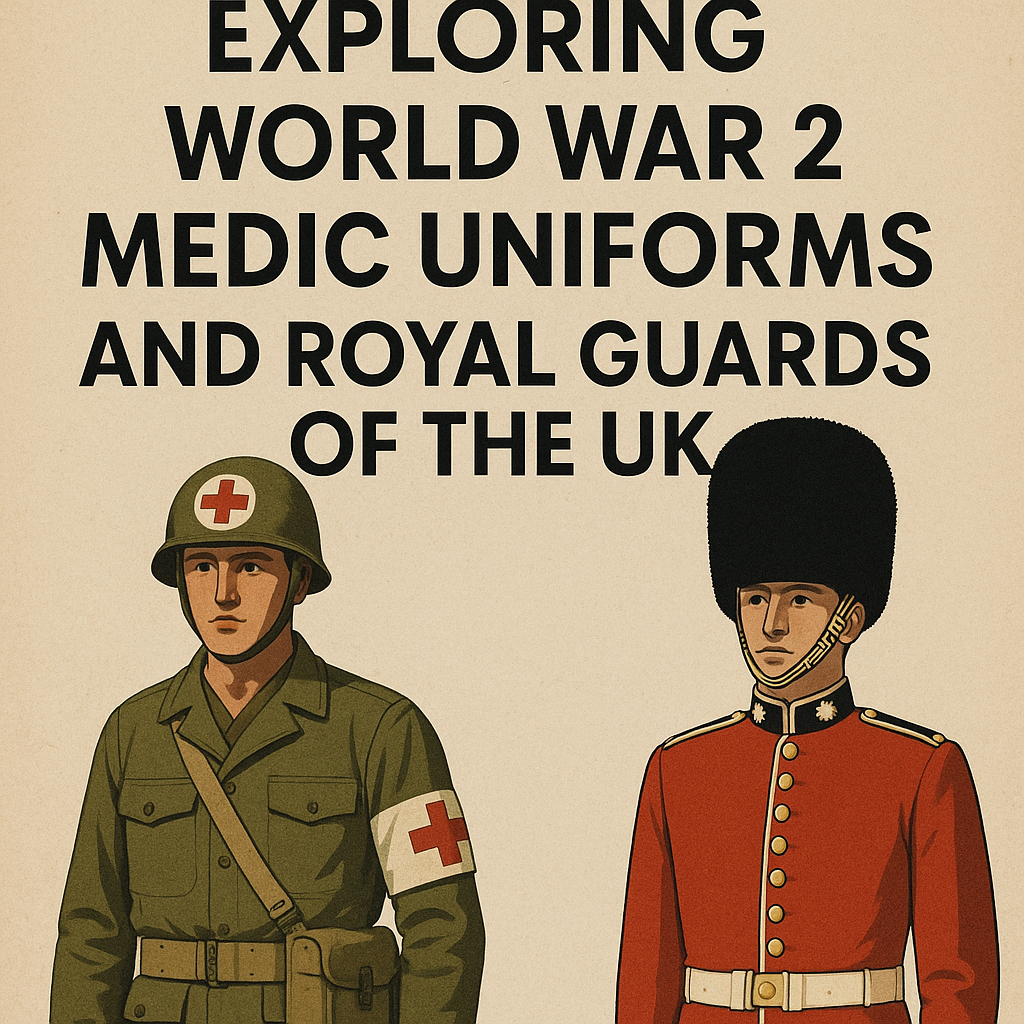
Exploring World War 2 Medic Uniforms and Royal Guards of the UK
Published on May 11, 2025
The Branches of Service: Exploring World War 2 Medic Uniforms and Royal Guards of the UK
Introduction
Uniforms have always played a central role in military history — not just for practical purposes but also for what they symbolize. From courage and commitment to role and rank, a soldier’s attire says more than words ever could. Among the most iconic are the World War 2 uniforms and the highly recognizable uniforms worn by the Royal Guards of the United Kingdom.
In this article, we explore these distinct military branches, uncovering their history, significance, and what made their uniforms stand apart. Whether you're a collector, reenactor, or simply a military history enthusiast, this guide will deepen your appreciation of these remarkable uniforms.
World War 2 Medic Uniforms: Serving on the Frontlines of Humanity
The Role of a Medic in WWII
World War II was one of the deadliest conflicts in human history, and medics were the unsung heroes of the battlefield. They didn’t carry weapons. Instead, they carried hope, bandages, and morphine. Medics were part of the medical corps and were embedded with infantry units to treat wounded soldiers directly under fire.
Their main mission? To save lives — under immense pressure, often at great personal risk.
Key Features of a World War 2 Medic Uniform
Though similar in structure to standard military outfits, medic uniforms had several distinguishing characteristics:
- Red Cross Armbands: Perhaps the most iconic symbol was the white armband emblazoned with a red cross. It identified medics under the Geneva Convention as non-combatants, offering some protection from enemy fire — at least in theory.
- Marked Helmets: Medics wore M1 helmets painted with red crosses on a white background, usually on all four sides of the helmet, to ensure visibility from any angle.
- Utility and Medical Pouches: They carried specialized medical gear — tourniquets, bandages, morphine syringes, sulfa powder, and even plasma bottles.
- Olive Drab Fatigues: Medics usually wore standard-issued U.S. Army fatigues, which were olive drab in colour. The difference lay in their gear and insignia, not the base uniform.
- Geneva Convention Identification Tags: In some cases, medics carried documentation to confirm their non-combatant status, although, in practice, enemy forces didn’t always honour this.
Legacy of the WW2 Medic Uniform
The bravery of medics in WWII left a lasting legacy. Today, authentic World War 2 medic uniforms are highly sought after by collectors and featured prominently in museums and war reenactments. Their history reminds us that not all heroes carried rifles — some carried stretchers.
The UK Royal Guards: Defenders of the Crown
Who Are the Royal Guards?
When you think of ceremonial British military uniforms, chances are the image of a stoic guard in a bright red tunic and bearskin hat comes to mind. These are the Royal Guards — elite soldiers charged with guarding royal residences like Buckingham Palace.
But did you know there are five different regiments of Royal Guards, each with its unique insignia, traditions, and history?
Different Types of Royal Guards & Their Uniforms
Despite their similar appearance, the guards' regiments are distinguishable by subtle differences in their uniforms:
- Grenadier Guards
- Button arrangement: Single-spaced
- Plume colour: White, worn on the left
- Known as the oldest of the five regiments and famed for their role in defeating Napoleon.
- Coldstream Guards
- Buttons: Paired
- Plume: Red, worn on the right
- Their motto, “Nulli Secundus”, means “Second to None,” even though they are technically the second-oldest regiment.
- Scots Guards
- Buttons: In threes
- No plume
- A proud Scottish regiment with a long and decorated history.
- Irish Guards
- Buttons: In fours
- Plume: Blue, worn on the right
- Often seen with a clover emblem on their collar, symbolizing their Irish roots.
- Welsh Guards
- Buttons: In five
- Plume: Green and white, worn on the left
- The newest of the regiments was formed in 1915.
These uniform details serve as visual cues to the trained eye — and a touch of hidden tradition for those looking to learn more.
Ceremonial vs. Combat Role
While often seen standing motionless outside palaces, Royal Guards are actual soldiers trained for combat. Their ceremonial duties are just one part of their role. In the past, Royal Guards have served in Afghanistan, Iraq, and other conflict zones.
Their iconic uniforms — especially the red tunic and bearskin hat — are part of British military pageantry and are recognized globally.
Uniforms as a Reflection of Service
Both the WWII medics and Royal Guards tell us a lot about how uniforms are used in military life. For medics, it was about function, identification, and survival. For the Royal Guards, it’s about history, ceremony, and visible tradition.
And yet, both reflect service in its purest form. Whether saving lives on the battlefield or honouring the Crown in public duty, these branches serve as powerful reminders of military dedication and legacy.
Conclusion
From the battlefield bravery of World War 2 medics to the proud traditions of the UK Royal Guards, military uniforms are more than garments — they are symbols of sacrifice, history, and pride. Whether you’re looking to collect, study, or simply admire, understanding the detail behind each stitch brings you closer to the real stories of the people who wore them.
At Paddelaters, we honour this legacy by offering historically accurate WW2 English uniforms, including medic gear and Royal Guard replicas. Each item is a piece of history — preserved and celebrated.
